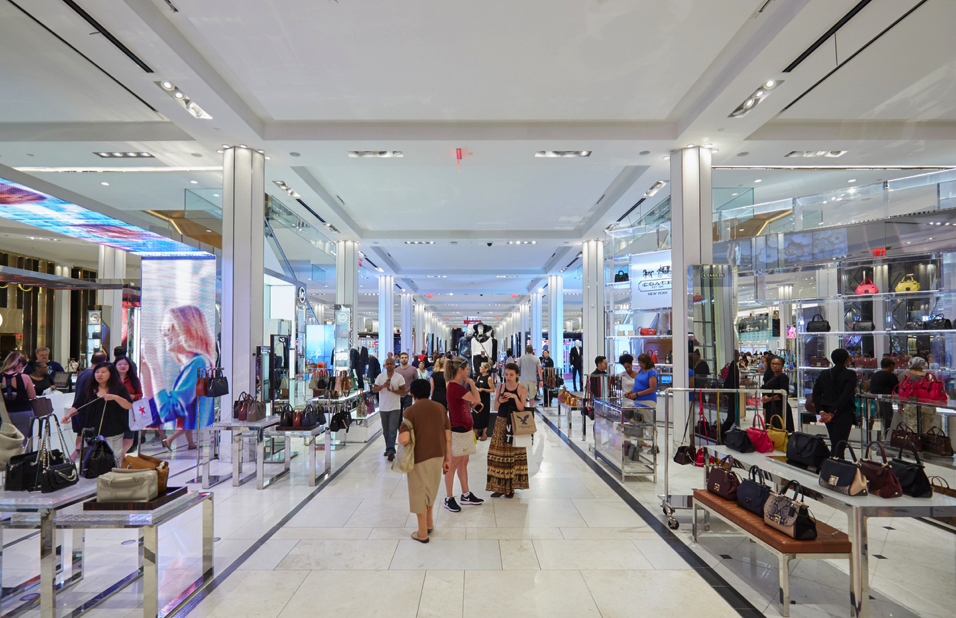
Kohl’s was among the retailers that wowed analysts and commentators this week when it reported a very strong increase in sales for November and December: comparable sales and total sales were both up 6.9%, the retailer’s strongest quarterly comp in a number of years. The Kohl’s report followed JCPenney’s announcement of its own, surprisingly solid, 3.4% increase in comparable-store sales for the nine weeks ended December 30.
Not all department stores are growing as fast, though, and it is notable that Kohl’s is not a typical, mall-based department store, as most of its stores are in off-mall locations. Macy’s reported comp growth of just 1.1% for the holiday quarter and announced further store closures, as did Sears. But, overall, the picture that is emerging is one of a very strong holiday season for US retail. Mastercard SpendingPulse noted a 4.9% increase in total US retail sales from November 1 through December 24. The US Census Bureau will release its top-line figure for December as we go to press on January 12, and it will follow up with more details later.
A Strong 2017 Holiday Heralds a Solid 2018 for US Retail
We expect 2018 to be a robust year for US retail, with sales growth (excluding autos and gas) comfortably in excess of 4% versus an estimated 3.8% for 2017. Retail sales expansion will likely be supported by macroeconomic strengths such as robust consumer confidence, low unemployment and, particularly, income tax cuts that will boost the disposable incomes of many consumers.
Opportunities for Department Stores in 2018
As Aristotle said, “One swallow does not a summer make,” and we must not kid ourselves that the structural challenges facing US department stores have disappeared. But we see a few levers that department stores could pull to retain and attract customers in 2018, in addition to benefiting from the expected general rising tide of retail sales this year.
First, retailers can use the major reform of US tax law to revive their propositions and, so, jump-start growth. In the best case, the cuts to income and corporate taxes could yield a virtuous circle, whereby shoppers’ increased spending and retailers’ lower taxes result in investments in “better retail” by department stores. These retailers could choose to spend on upgrading store environments, lowering prices, investing in store staff, enhancing marketing, or improving omnichannel services such as mobile offerings or in-store technologies.
Second, personalization offers an opportunity for generalist retailers to heighten their relevance to consumers. Department stores could provide customers with personalized home pages, email campaigns, videos and promotions, and recommendations and communications that flex based on location and daypart as well as by customer. Artificial intelligence (AI) will be a springboard for personalization this year, and we think that it will prove particularly useful for US department stores, which can deploy the technology to surface highly relevant products for individual shoppers from an unwieldy inventory. In other words, the most generalist of retailers can begin addressing a consumer segment of one.
Third, we see sustained opportunities for collaboration between department stores and brands and other retailers. Department stores could follow Target’s lead in bringing formerly online-only brands such as mattress maker Casper and shaving products purveyor Harry’s to physical stores. They could also agree to the kind of tie-up that saw Kohl’s begin to sell Amazon technology products and accept returns on Amazon’s behalf in its stores last year.
So, after the dominant narrative of store closures in 2017, this year offers some promise of stronger demand for a number of US department stores. The scale of the improvement is partially dependent on the retailers’ willingness to invest and, particularly, to reinvest proceeds from tax reform into better propositions that strengthen their hand, rather than simply cashing their gains.
Other pieces you may find interesting include: Walmart and JD.com Expand Strategic Partnership in China US Holiday Retail Sales Grow by a Healthy 4.9%, Beating Estimates, US 2017 Holiday Homestretch: Retail Recap and Predictions for the Season’s Biggest Week
Connect with us on social media:
@DebWeinswig
@FungRetailTech
Facebook
LinkedIn
Subscribe to our YouTube channel
Pinterest
Instagram